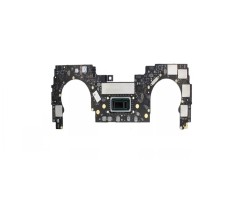What Are the Key Considerations for Corporate Office Interior Design?
Designing a corporate office is a multifaceted task that goes beyond mere aesthetics. It involves creating a space that reflects the company’s culture, enhances productivity, and meets the needs of employees and clients alike. As businesses evolve and adapt to new work environments, the importance of thoughtful corporate office interior design has never been more critical. Here are some key considerations to keep in mind when planning your corporate office interior design.
1. Understanding Company Culture
The first step in any corporate office interior design project is to understand the company’s culture and values. The design should reflect the essence of the organization and create an environment that aligns with its mission.
-
Brand Identity: Incorporate elements that represent the brand, such as colors, logos, and design motifs. This helps create a cohesive identity that employees and clients can recognize and connect with.
-
Work Style: Consider how employees work. Is the company more collaborative, or do employees require quiet spaces for focused work? Understanding these dynamics will guide the design choices you make.
2. Functionality and Layout
A well-thought-out layout is essential for maximizing the functionality of the office space. The design should facilitate workflow and communication while providing areas for collaboration and concentration.
-
Zoning: Divide the office into distinct zones for different activities, such as open workspaces, meeting rooms, and relaxation areas. This zoning helps employees know where to go for specific tasks and encourages productivity.
-
Traffic Flow: Ensure that the layout allows for smooth movement throughout the office. Avoid cluttered pathways and create clear routes to essential areas like restrooms, break rooms, and meeting spaces.
3. Ergonomics and Comfort
Employee comfort is a crucial consideration in corporate office interior design. Ergonomic furniture and thoughtful design can significantly impact employee well-being and productivity.
-
Furniture Selection: Invest in ergonomic chairs and desks that promote good posture and reduce strain. Adjustable furniture can accommodate different body types and preferences, enhancing comfort for all employees.
-
Break Areas: Designate comfortable break areas where employees can relax and recharge. Incorporating soft seating, natural light, and calming colors can create a welcoming environment for downtime.
4. Incorporating Technology
In today’s digital age, technology plays a vital role in the workplace. Integrating technology into the office design can enhance productivity and streamline operations.
-
Smart Solutions: Consider incorporating smart technology, such as automated lighting and climate control systems. These solutions can improve energy efficiency and create a more comfortable working environment.
-
Collaboration Tools: Equip meeting rooms with the latest technology for video conferencing and presentations. This ensures that teams can collaborate effectively, whether they are in the office or working remotely.
5. Sustainability
Sustainability is an increasingly important consideration in corporate office interior design. Implementing eco-friendly practices can benefit the environment and enhance the company’s reputation.
-
Sustainable Materials: Choose materials that are environmentally friendly and sustainable. This includes using recycled materials, low-VOC paints, and energy-efficient lighting.
-
Biophilic Design: Incorporate elements of nature into the design, such as plants, natural light, and water features. Biophilic design has been shown to improve employee well-being and productivity while reducing stress.
6. Flexibility and Adaptability
The modern workplace is constantly evolving, and the design should be flexible enough to adapt to changing needs. Creating a versatile space can help future-proof the office.
-
Modular Furniture: Consider using modular furniture that can be easily reconfigured to accommodate different layouts and activities. This allows the office to adapt to new work styles and team sizes.
-
Multi-Functional Spaces: Design spaces that can serve multiple purposes, such as meeting rooms that can be used for training sessions or social gatherings. This flexibility maximizes the use of available space.
7. Aesthetics and Ambiance
While functionality is essential, the aesthetic appeal of the office should not be overlooked. A well-designed space can inspire creativity and foster a positive work environment.
-
Color Schemes: Choose color schemes that reflect the company’s brand and create the desired atmosphere. For example, calming colors like blues and greens can promote focus, while vibrant colors can energize the space.
-
Artwork and Decor: Incorporate artwork and decor that resonate with the company’s values and culture. This can include local art, motivational quotes, or displays that celebrate the company’s history and achievements.
Conclusion
Corporate office interior design is a critical aspect of creating a productive and engaging work environment. By considering factors such as company culture, functionality, ergonomics, technology, sustainability, flexibility, and aesthetics, businesses can design spaces that not only meet the needs of employees but also reflect their brand identity.
Investing in thoughtful interior design can lead to increased employee satisfaction, improved productivity, and a positive company image. As the workplace continues to evolve, staying attuned to these key considerations will help ensure that your corporate office remains a space where employees thrive and innovation flourishes.
What People Also Ask
What is corporate office interior design?
Corporate office interior design refers to the planning and execution of the interior spaces of a corporate office. It involves creating functional and aesthetically pleasing environments that reflect the company’s brand and culture.
Why is interior design important for businesses?
Interior design is important for businesses because it can enhance employee productivity, improve well-being, attract and retain talent, and create a positive brand image. A well-designed office can lead to increased employee satisfaction and better overall performance.
How can I improve my office interior design?
To improve your office interior design, consider assessing your current layout, incorporating ergonomic furniture, utilizing natural light, and creating collaborative spaces. Engaging a professional interior designer can also provide valuable insights and expertise.
What are some trends in corporate office interior design?
Current trends in corporate office interior design include biophilic design, flexible workspaces, open floor plans, and the use of sustainable materials. These trends focus on creating environments that promote well-being, collaboration, and adaptability.
How can interior design impact employee morale?
A well-designed office can positively impact employee morale by creating a comfortable and inspiring environment. Elements such as natural light, ergonomic furniture, and collaborative spaces can enhance job satisfaction and overall happiness in the workplace.
What's Your Reaction?





















